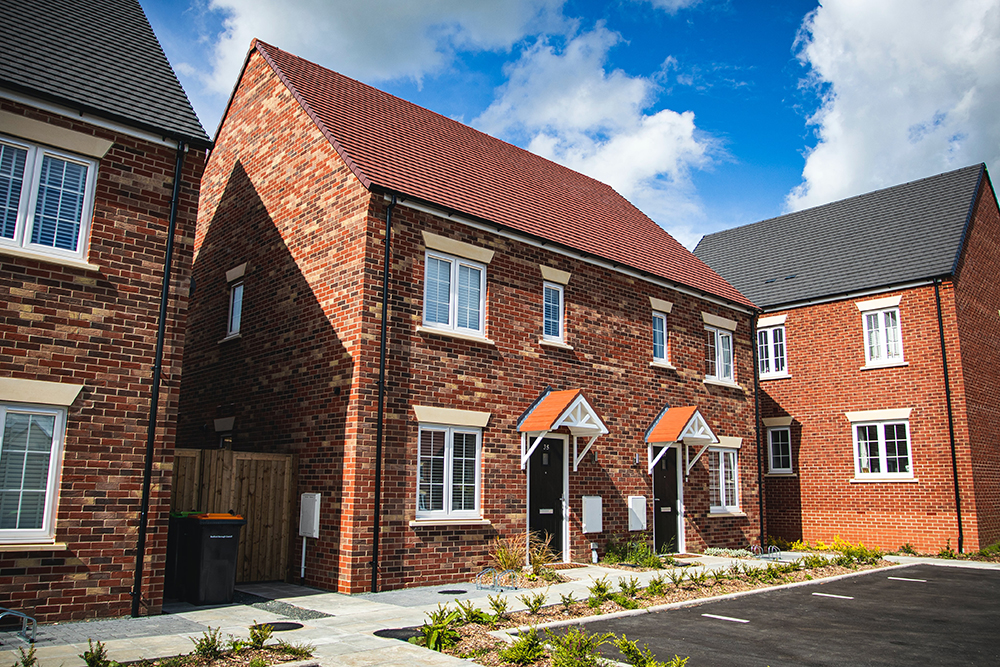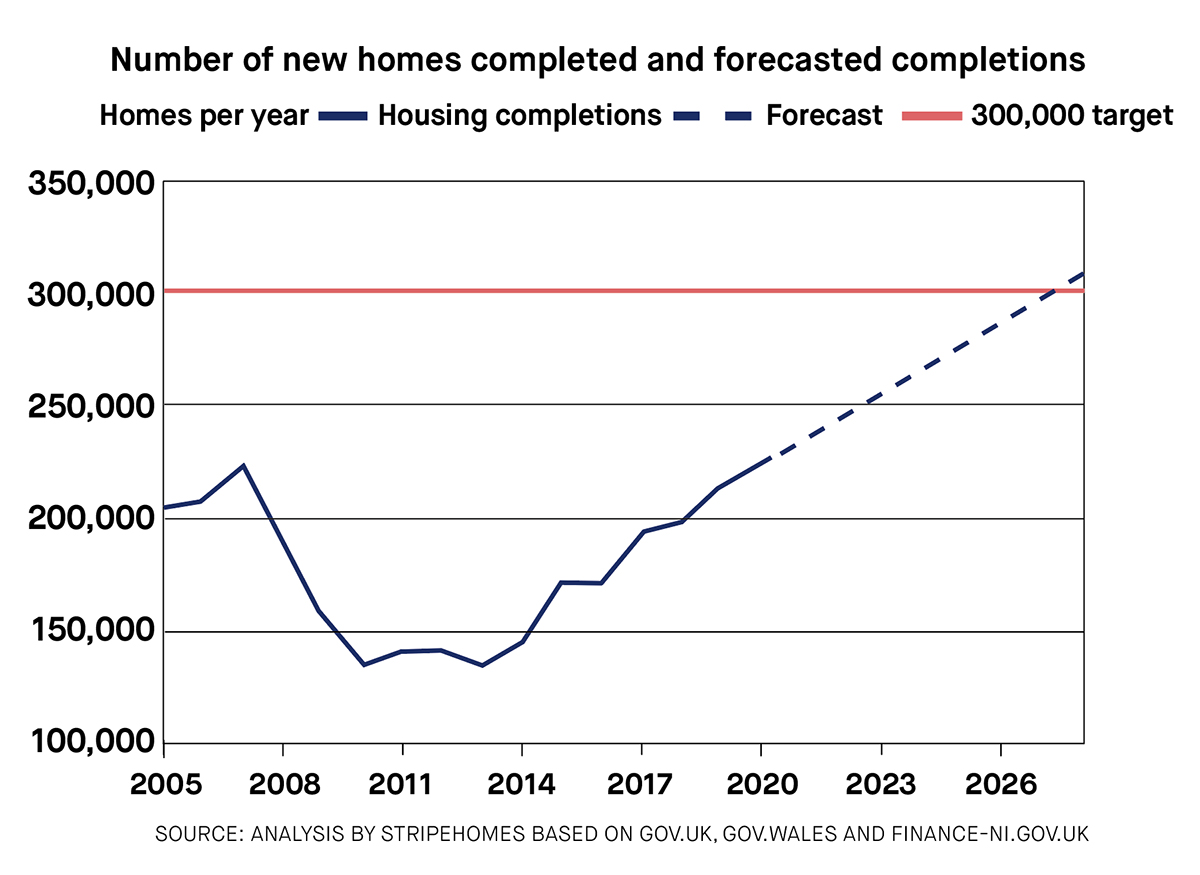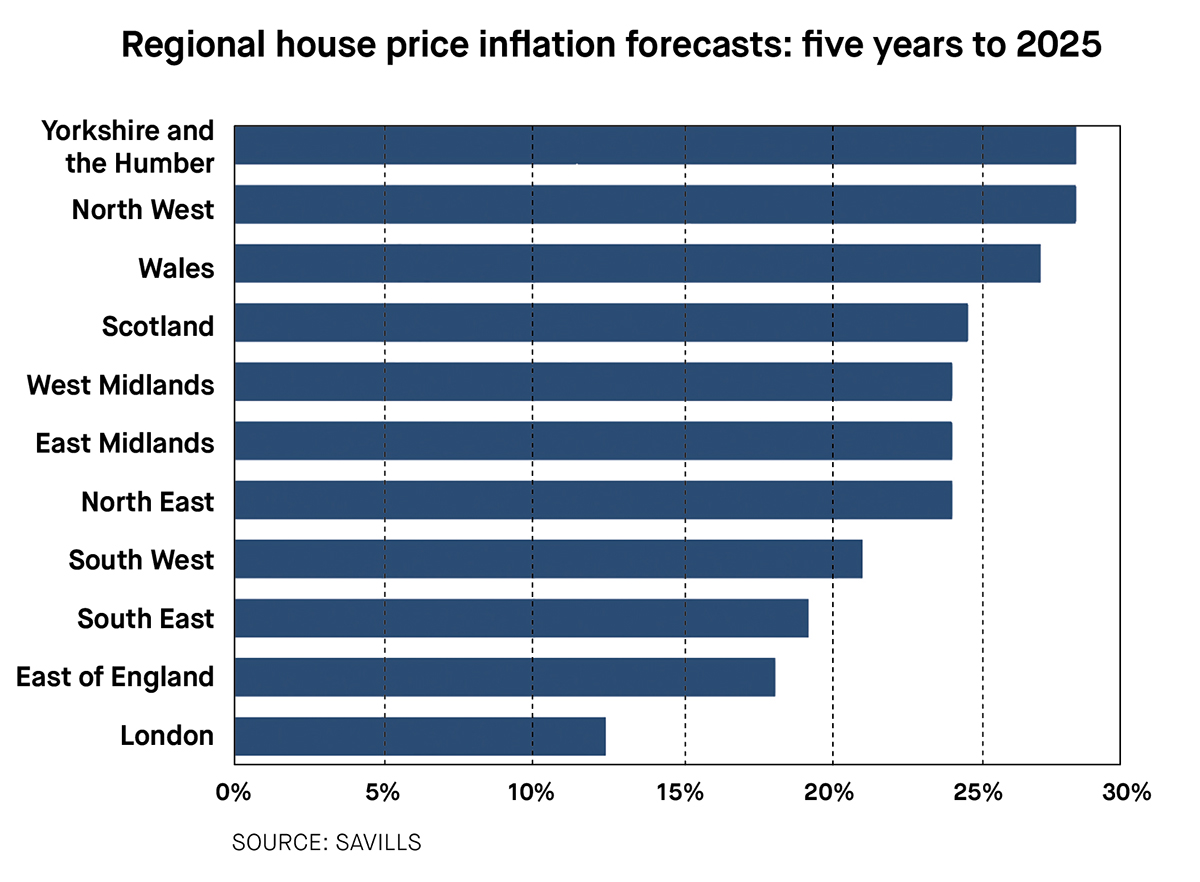
Demand for housing looks likely to diffuse throughout the UK in the wake of the Covid-19 pandemic, writes Kris Hudson.
The rebranded Department for Levelling Up, Housing and Communities (DLUHC) is a signal of how integral the government sees housing provision to economic opportunity and growth. Yet the housebuilding sector still faces a longstanding challenge to meet targets. 2020 is the first time the UK has delivered homes at a similar rate to the late 2000s. However, projections by developer StripeHomes indicate the government will not start hitting its 300,000 per annum goal until 2028.
At the same time, demand for different types of new homes is starting to change as lifestyles adapt post-pandemic. The number of registrations for new apartments – typically mid or higher-rise and with limited outdoor space – dropped by 20.4% between Q4 2019 and Q2 2021.
By comparison, registrations of more traditional family housing types all increased, with detached homes especially in demand with a jump of 41.7% in the same period. While nascent as a trend, the long-term implications are for homes built at a lower density and with a growing premium for those with more space.

We are also seeing early signs of change in where those homes are. Long viewed as a major powerhouse for homebuilding, London saw 3,017 fewer registrations in the 12 months to Q3 2021 compared to the annual average before the pandemic. By contrast, every other region saw an increase on pre-Covid-19 levels, with the East of England topping the chart with 4,915 more registrations.
Michael Gove, the new secretary of state for DLUHC, also seems to recognise the new trend and there is an expectation that proposed English planning reforms could be re-geared to shift the emphasis for housebuilding towards the North.

But as the dynamic of UK housebuilding changes, so too could its affordability. Currently London is the most expensive location in the UK for first time buyers – with housing 9.4 times higher than earnings when based on Nationwide data as of Q3 2021. This compares to just 3.5 times earnings in Scotland, 3.6 in the North and 4.1 in Yorkshire and Humber.
Could shifting working patterns post-pandemic change that dynamic and make UK regions less affordable? Savills’ forecasts imply so, suggesting that prices could increase the most in Yorkshire and Humber (28% within five years), the North West (28%) and Wales (26.8%) as commuter belts expand.
Inflation will be a critical factor in how these trends play out, with the prospect of a rise in the Bank of England base rate further impacting affordability. For housebuilders looking to mitigate material cost escalation, increased productivity through digital design and modular manufacture could help ease the pressures of an inflationary market.










